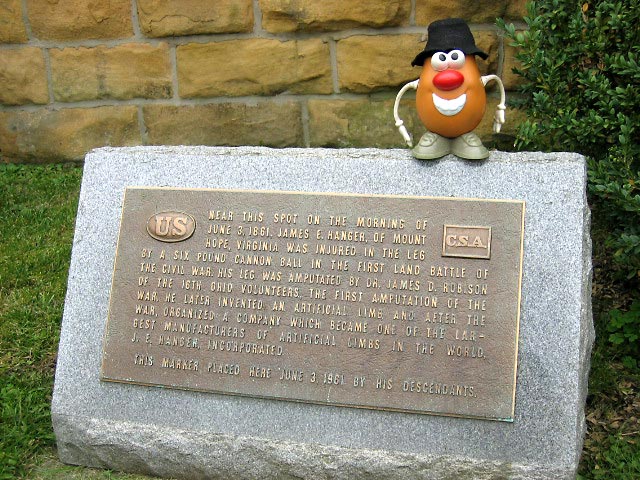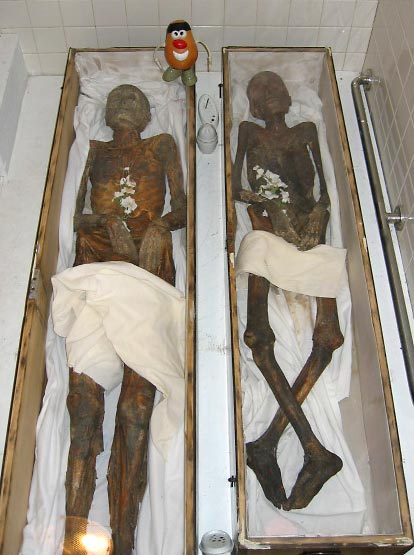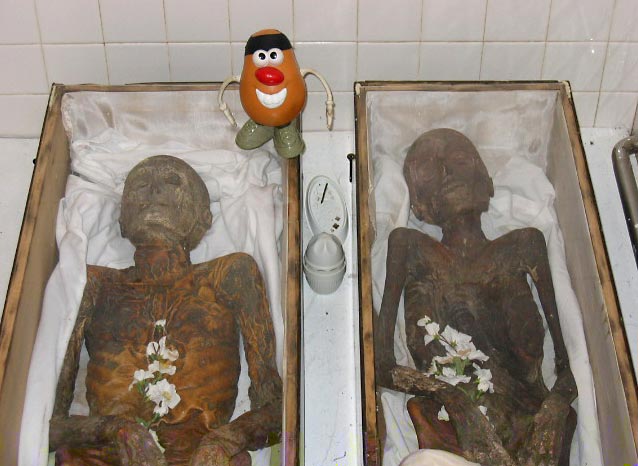

Spud received an email one day that had been sent by the Tourism Board in West Virginia. The Board had been offended that Spud had traveled to see Canada's famous covered bridge in Hartland, New Brunswick, but had not made a visit to West Virginia to see their's. Although he could barely contain the excitement of seeing another covered bridge, Spud pulled himself together and decided he would take the Board up on its cordial invitation and make the journey down to the rolling hills of the Tygart Valley.

Well they certainly didn't disappoint. The bridge was the only wooden two lane covered bridge in operation in the USA. Probably due to the fact that its restricted ventilation doubles as an incubation chamber for carbon monoxide poisoning. After passing out from the fumes and almost crashing his car into the river, Spud climbed out to catch a breath of fresh air and regain his senses.
As the tater walked around the picturesque little town of Phillipi, he came across a stone monument that had been erected to pay homage to a hero of potatoes and pirates the world over.


 The
placard marked the spot of the first amputation of the U.S. Civil War. James
Hanger, a 18 year old cavalry man had been hit with a cannonball in the leg
during the first land battle of the war. Union doctors amputated his leg, but
the resourceful Hanger went on to build himself a peg leg. Seeing great potential
of having a removable appendage, the man began to manufacture and sell artificial
limbs, eventually growing his company into one of the largest prosthetic developers
in the world.
The
placard marked the spot of the first amputation of the U.S. Civil War. James
Hanger, a 18 year old cavalry man had been hit with a cannonball in the leg
during the first land battle of the war. Union doctors amputated his leg, but
the resourceful Hanger went on to build himself a peg leg. Seeing great potential
of having a removable appendage, the man began to manufacture and sell artificial
limbs, eventually growing his company into one of the largest prosthetic developers
in the world.
Hanger's great success influenced others to develop appendages for tuberous carbohydrates and filled the need to make vegetables mobile. Without that cannonball being blasted back in 1861, today potatoes would be immobile, helpless orbs - resigned to live life as a side dish on the Blue Plate Special.
Aside from these magnetic tourist draws, Spud would learn that the real highlight of the area is the Barbour County Historical Museum. Housed in a renovated Rail station, the museum is home to countless pieces of Civil War memorabilia. Of course, the vintage muskets, shrapnel and old tattered flags pale in comparison to the building's two famous residents: a pair of mummies hidden away in a back room.
Unfortunately, these mummies were not found in a golden sarcophagus that had been buried deep in a tomb of untold riches. Instead, they were the result of a macabre experiment performed by a radical frankenstein-esque farmer back in 1888.
Convinced that he had uncovered the secret of mummification, the man 'liberated' the cadavers from a nearby hospital and treated their bodies with an oily solution. Remarkably, the concoction worked, and over a century later, the leathery corpses are testament to his recipe. Spud found a few bottles of the solution on display and noted that it looked and smelled suspiciously like Newman's Own salad dressing.
Today, the somewhat moldy mummies are carefully stored in a hermetically sealed bathroom and are vigilantly guarded by a Glade air freshener which also manages to keep them smelling 'springtime' fresh.